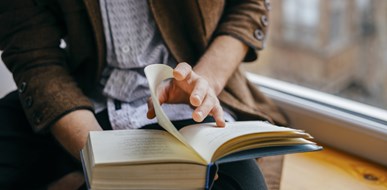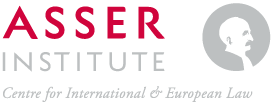Who does it belong to? Looted art and cases of restitution
Published 12 September 2019By Julia van der Krieke

©Shutterstock.
Restitution cases around art and other objects continue to spark controversy as family members or direct victims of conflicts are stepping up. Every so often, the dubious provenance of an artwork becomes newsworthy, usually combined with a dispute over ownership.
In 2022, both the Rijksmuseum and the Jewish Cultural Quarter in Amsterdam will be hosting exhibitions on the theme of looted art. An undeniable category of cultural heritage. In December 2018, the Stedelijk Museum of modern and contemporary art and design in Amsterdam was involved in a case in which members of a Dutch Jewish family tried to claim back a Kandinsky painting, Bild mit Häusern from 1909. The family had been forced to sell the artwork on 9 October 1940 to survive during the Shoah or Holocaust. The Dutch Restitution Commission decided that the work should stay in the museum, even though “the City Council had acted in bad faith when it acquired the work at a sale in 1940.” Public interest outweighed the latter and the restitution application was rejected.
Objects with a past
Debates on this topic arose more intensely after the Second World War and after countries were trying to shed their colonial heritage. Besides cases related to the Second World War, there are examples of disputes regarding art from other conflicts and wars too. Recently, Chinese Cai Mingchao won the bid on two Chinese sculptures, each sculpture costing around 15 million euros at an auction in Paris. Afterwards, he refused to pay for them since ‘they were stolen during the 19th century Opium War’. Everywhere, the material life of objects is gaining importance. Objects have a biography and need to be seen in context. The era of displaying an Etruscan vase solely for its aesthetic value, or a Kandinsky without a certificate stating it was fairly sold, is over.
The obligation to research the provenance of objects
Returning to the Shoah, in 1998, 44 countries signed the Washington Principles on Nazi-confiscated Art. Only five of these countries, Germany, Austria, the UK, France and the Netherlands, have so far set up committees to determine the provenance of suspect artworks. In October 2018, the Dutch newspaper NRC Handelsblad published an article stating that dozens of Dutch museums contain tainted works. This comes to a total of at least 170 objects, which encouraged Dutch museums to investigate their own collections. Consequently, 42 Dutch museums have been able to distil looted artworks. From the Stedelijk Museum alone, 4,000 artworks have been investigated on the basis of suspected Nazi looting; fifteen works are still debated.
During the Shoah, Amsterdam’s Jewish citizens were taken from their homes to be deported to concentration and death camps. Moving company Puls displaced their belongings and new people entered. Abraham Puls, a Dutch collaborator who turned in several Jews to the Germans and who gave the practice its name ‘pulsen’ was tried after the war in 1947. The office of SS-Sturmbahnführer Albert Schmidt-Stähler on the Keizersgracht and later Rokin coordinated the actions. Schmidt-Stähler noted that they had managed to ‘clear’ 29,000 Jewish homes.
Stolen books
Different Amsterdam depots contained different stolen goods. Books were stored at Rokin 116. Perhaps the most famous example of someone whose belongings were taken by Puls is Anne Frank. The plundering included large book collections that booksellers sold in the Netherlands or Germany. In the summer of 1943, the eye fell on the oldest Jewish library in Amsterdam, Ets Haim. One hundred seventy crates filled with valuable books and manuscripts were sent to Frankfurt. One year later, in June 1944, the Nazis subjected the Bibliotheca Rosenthaliana to the same fate. Although some objects successfully went into hiding, the majority of items never returned to its lawful owners. Nor were victims compensated for their loss. In many of these cases, a strictly legal approach does not suffice. A key factor in the failure of restitution cases is the lack of proof. Documents had been destroyed or had simply ‘disappeared’.
Two years ago, I bought an old copy of Altneuland, the novel written by Theodor Herzl in 1902. The book had a name handwritten in the front with a date, 13 May 1942. Most names written in second- hand books would not draw attention. However, in this case, the combination of the date and theme, the idea of a Jewish state (an idea born while Herzl started to feel the antisemitism in Austria all too strongly), seemed to tell a story. After inquiring about the name in the book in my surroundings, asking online and approaching a few instances, I received a tip from a Jewish organisation that keeps a file on Dutch Jews. They had someone registered under the name I was looking for, and I could call him.
To my great surprise and poignancy, the man on the other end of the line was the very boy who had written his name in this book on 13 May 1942. At the time, he was still living with his parents in an Amsterdam flat. Approximately half a year later the family was arrested and their belongings confiscated. The then boy, now a man in his early nineties who had miraculously survived the war, had not seen any of his books until the moment I paid him a visit. Seventy-seven years later, he was holding his book again, fortuitously on 5 May, our national liberation day. This anecdote underlines how objects can lead many lives and can have value far beyond the materialistic. Once a fifteen-year-old boy from Amsterdam with a family still complete, not yet subjected to the horrors of the camps, the book represents his past. And with that a reality that, unlike the book, cannot return.
In the Netherlands, there are people who are still looking for tangible remainders of their or their family’s past. Books, artworks, or other things from the time ‘before’. Restitution is not over and dealt with, it is something we should continue to strive for.

